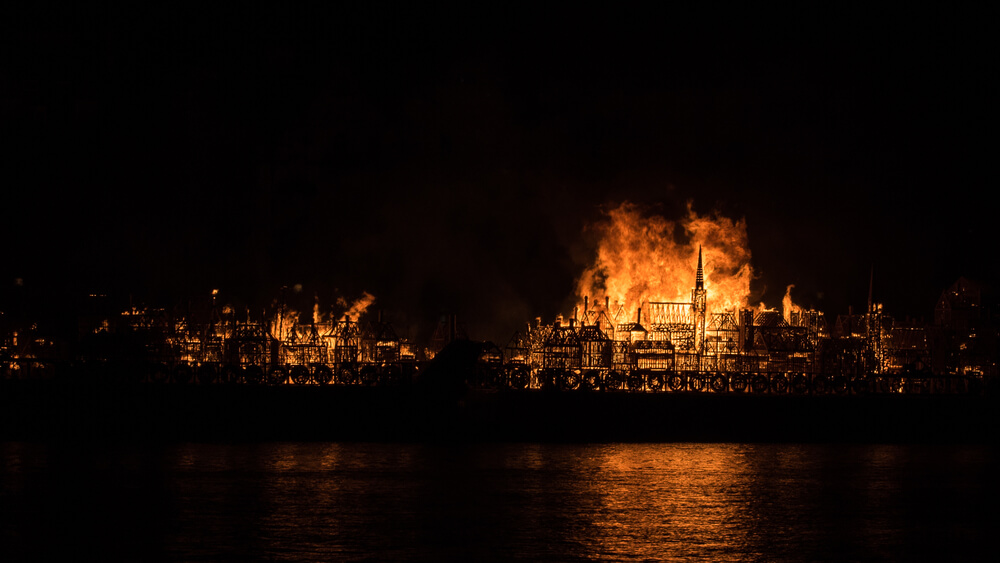In 1666, an overwhelming fire swept through the streets of London. The great fire of London destroyed 13,200 houses and 87 parish churches. It is also reported that the St. Paul’s Cathedral, Royal Exchange and Guildhall were lost in the fire. Not to mention are the six people that died in the fire, leaving their families grieving while recounting the losses.
How was London in 1666?
In the 1660s, people were not aware of how dangerous fire can be. They could therefore make houses using timber and cover them using pitch, a very flammable substance. With little planning, roofs were made of thatch, and the houses were tightly packed together.
London was highly populated when the fire started. There were no cars or Lorries. People did not live in houses. Instead, they lived in the sheds of the yard. The type of housing in London was to a great deal a recipe of disaster.
London was suffering a severe drought that led to water scarcity. The yards that were made of straw and flammable hay made it easier for fire to burn. The drought also dried the wooden houses, so they caught fire quickly.
The Great Fire
On Sunday, Sept 2, 1666, the fire began on Pudding Lane in a baker’s shop belonging to Thomas Farynor (Farriner). Farynor said that he extinguished the fire, but three hours later, at 1 am, the whole place was a blazing oven.
The fire was a common occurrence in London; therefore, people were not concerned until they saw it spreading quickly. The fire carried Fish Hill and spread towards the River Thames. At the Thames, the fire hit the warehouses that kept combustible products such as tallow and oil.
Fortunately enough, the fire did not spread to the south of the river. Thanks to the major blaze of 1633 that had already destroyed part of the London Bridge.
Samuel Pepys Was the First to See the Fire
Samuel Pepys, a clerk to the Royal Navy, saw the fire first. He recommended that people use hooks to stop the fire. But unfortunately, the fire did not stop. People buried expensive items in the burning buildings. Pepys, too, buried his costly cheese and wine.
How the Fire was Stopped
Pepys talked to the Navy, and they agreed to blow some houses to stop the fire from spreading further. The Navy executed the request using gunpowder. Fortunately, by Wednesday, Sept 5, 1666, the fire was under control. But some fires continued breaking out, and the ground was too hot to walk on.
London after the Fire
The better part of London was reconstructed after the fire. Temporal structures were set up to accommodate people. However, many people contracted diseases and died in the following winter. Thirteen thousand two hundred houses, 87 parish churches were lost. The Guildhall and St. Paul’s Cathedral and the Royal Exchange also went down. On the positive side, a clever businessman spotted an opportunity and employed the first fire brigades to stop the fire.

